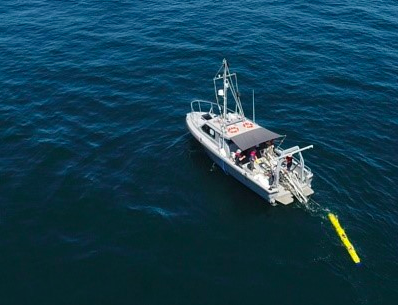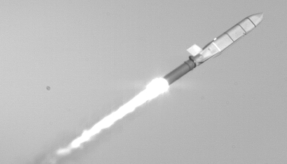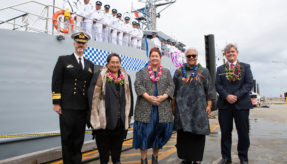
Thales Australia and Flinders University have signed a Memorandum of Understanding to conduct a study into the development of an automation system for the launch and recovery process of the General Dynamics Mission Systems Bluefin 9, procured by the Royal Australian Navy under its Deployable Mine Counter Measures project.
Current launch and recovery processes for AUVs require human involvement in the deployment of the AUV from an Unmanned Surface Vehicle (USV); through either direct placement and retrieval from the water or activation from the platform. This collaboration will determine how best to increase the safety for navy personnel by removing ’the person from the mission’ through an end-to-end automation process.
“The concept of Automatic Launch and Recovery Systems from a USV would revolutionise the current method of deployment.” Thales Underwater Systems Director, Troy Stephen said.
“Not only would it completely remove the person from the minefield but it could eliminate many of the current limitations of Unmanned Underwater Vessels (UUV) such as transit time, battery drain, communications and mission risk. The autonomation of this process will provide a significant enhancement to the Navy’s capability”
In this study, Thales Australia will act as the design authority, working with key stakeholders to ensure that all capability and safety requirements are being met to allow Royal Australian Navy personnel to execute their mission safely.
Flinders University, world leaders in marine environments and autonomy, and a key academic partner in the recently announced $15 million TAS-CRC project, will provide subject matter expertise to investigate potential concepts for the Automatic Launch and Recovery System from a USV.
Mr Stephen, said: “This study is an important step forward in Navy’s transition towards autonomy; particularly in the field of mine countermeasures with its defined phases of Detection, Classification, Identification and Neutralisation. The complexity of this shift requires genuine partnership and collaboration between Defence, Industry and Academia and we’re pleased to be working with Flinders University on this crucial study.”
If you would like to join our community and read more articles like this then please click here







